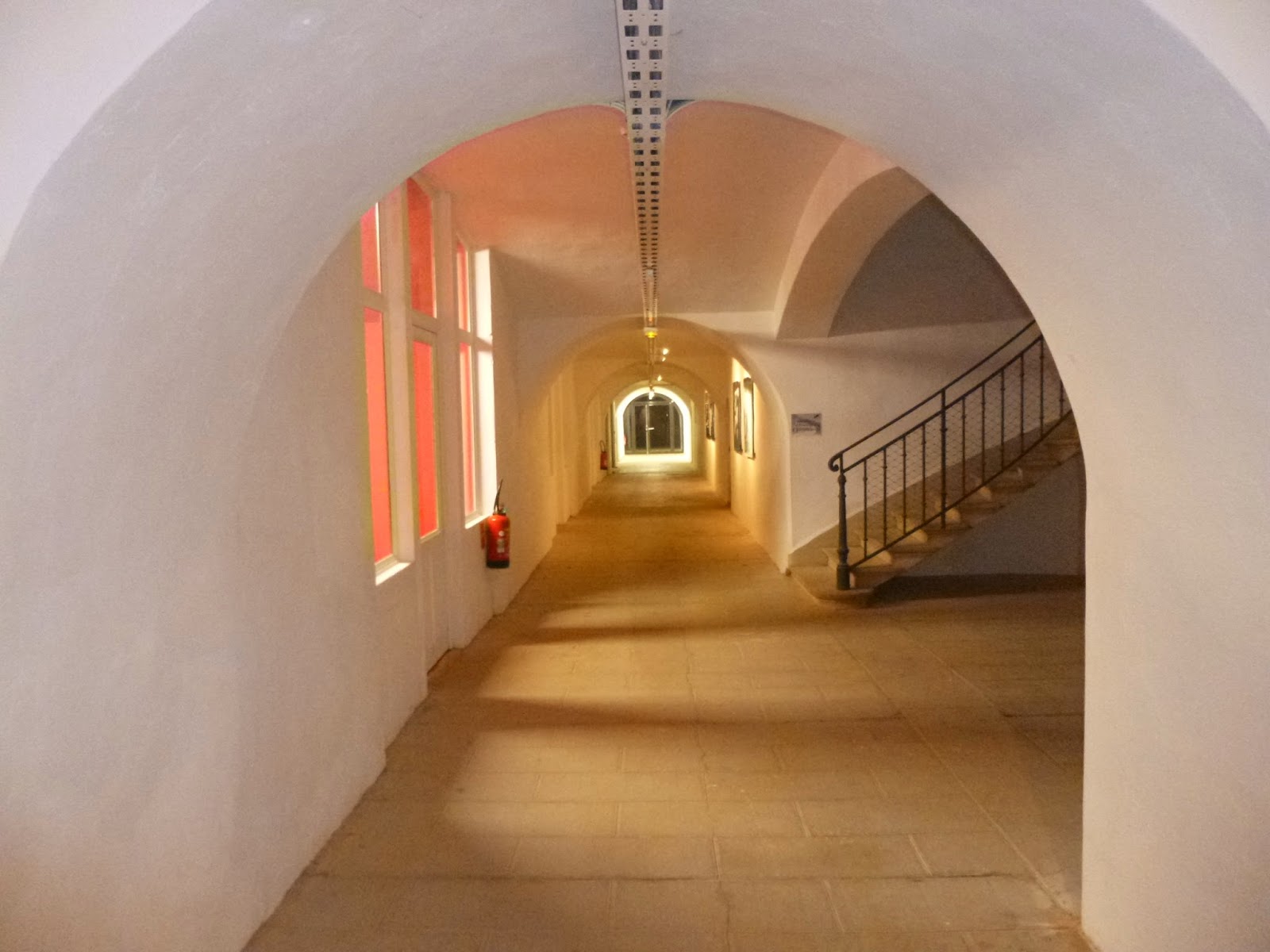 |
Called '75 Blue Note Sound & Graphics', this 75th anniversary exhibition tells the visual story of Blue Note Records in four exhibition rooms to a background of jazz music by many of the illustrious musicians who recorded jazz albums in Blue Note's studios.
Blue Note was founded in 1939 by Alfred Lion and Max Margulis, two German Jews who fled to America to escape the Nazis, and little did they know at the time that their company would become one of the most famous jazz labels in the world, that it would record almost all the world's greatest jazz musicians at one time or another, and that it would still be up and running today. Blue Note issued albums of many jazz styles and genres, including trad jazz, bebop, swing, modern jazz and hard bop, which is a style that includes musical elements from other musical styles, such as rhythm and blues, gospel, blues and soul.
Entry is free and the exhibition rooms are to be found along elegant and airy corridors such as this one.The natural light is extremely pleasing on the eye.
I came across this very inviting corridor too, although there are no rooms along it. What's on the other side of the gate? The inner courtyard of the fort.
The first room I entered contained a lot of Blue Note album sleeves and the walls were lined with photographs of jazz musicians. Blue Note sleeves were unique in their design, and the man resposible for that was also the man who took the photos.
That man was Blue Note record company executive, photographer and record producer Francis Wolff, who joined the label in 1939, the year of its creation. The stars of the show for me are the many top quality outsized prints of sumptuous black and white photos taken by Wolff, who took thousands of photos of a galaxy of jazz greats over thirty years, many of them during pre-recording rehearsal sessions.
His work was used on album sleeves and publicity documents and it is still used today in Blue Note's reissue CD booklets. Here is a selection, and let's see how many of the musicians you can identify. (Sorry about the flash light in some of them but it was the only way of getting a photo.)
Other rooms contained lots of memorabilia, including photos of jazz masters by others, posters, album covers, and some amusing spoof Blue Note covers featuring photographs of Barak Obama and other American politicians and diplomats. You can visit Blue Note's website, there's a reading and reference area and there's also a record deck with a selection of Blue Note albums to pick from and play. The one playing while I was there was the Art Blakey and the Jazz Messengers' Like Someone in Love.
Finally, there is also a selection of modern graphic arts interpretations of jazz musicians.
So there you have it, the 75 Blue Note Sound & Graphics exhibition at the Fort du Bruissin in Franchville, near Lyon. It was a delightful experience and I'll bet that those who built this fort back in the 1830s never imagined that its barracks would one day house an exhibition about 20th century jazz!
I wish an excellent day/evening to one and all and thanks for dropping by.
























































